- Clone
- Poly9059 (See other available formats)
- Regulatory Status
- RUO
- Other Names
- Keratin, type II cytoskeletal 5, CK-5, 58 kD cytokeratin, cytokeratin-5, type-II keratin Kb5, epidermolysis bullosa simplex 2 Dowling-Meara/Kobner/Weber-Cockayne types, keratin 5 (epidermolysis bullosa simplex), krt5
- Isotype
- Chicken IgY
- Ave. Rating
- Submit a Review
- Product Citations
- publications
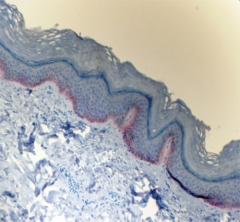
-

IHC staining of anti-Keratin 5 antibody (Poly90590) on formalin-fixed paraffin-embedded human skin tissue. Following antigen retrieval using Sodium Citrate (Cat. No. 928602), the tissue was incubated with the primary antibody for 60 minutes at room temperature at 1 µg/ml. After incubation with biotinylated anti-chicken antibody, the tissue was labeled with BioLegend’s HRP labeling reagent followed by addition of AEC chromogen (Cat. No. 925804). The tissue was then counterstained with hematoxylin.
| Cat # | Size | Price | Quantity Check Availability | Save | ||
|---|---|---|---|---|---|---|
| 905903 | 25 µg | 172€ | ||||
| 905904 | 100 µg | 286€ | ||||
Keratin 5 belongs to the type II cytokeratin family of proteins. It dimerizes with Keratin 14 to form intermediate filaments (IFs) that make up the cytoskeleton of the basal epithelial cells. Keratin 5 is involved in several diseases including breast and lung cancers.
Product DetailsProduct Details
- Verified Reactivity
- Human, Mouse
- Antibody Type
- Polyclonal
- Host Species
- Chicken
- Immunogen
- This monospecific polyclonal antibody was raised against a peptide sequence derived from the C-terminus of the mouse keratin 5 protein.
- Formulation
- Phosphate-buffered solution, pH 7.2, containing 0.09% sodium azide.
- Preparation
- The antibody was purified by affinity chromatography.
- Concentration
- 0.5 mg/ml
- Storage & Handling
- The antibody solution should be stored undiluted between 2°C and 8°C.
- Application
-
IHC-P - Quality tested
- Recommended Usage
-
Each lot of this antibody is quality control tested by formalin-fixed paraffin-embedded immunohistochemical staining. For immunohistochemistry, a concentration range of 0.1 – 5.0 µg/ml is suggested. It is recommended that the reagent be titrated for optimal performance for each application.
- Product Citations
-
- RRID
-
AB_2721742 (BioLegend Cat. No. 905903)
AB_2721743 (BioLegend Cat. No. 905904)
Antigen Details
- Structure
- Keratin 5 is a 590 amino acid protein with a molecular mass of 62 kD.
- Distribution
-
Tissue distribution: esophagus, hair follicle, saliva, and skin.
Cellular distribution: cytoskeleton, extracellular, nucleus, and cytosol. - Function
- Keratin 5 IFs contribute to the cell architecture and provide the cells with elasticity to withstand mechanical and non-mechanical stresses.
- Interaction
- Keratin 14
- Biology Area
- Cell Biology, Cell Motility/Cytoskeleton/Structure, Neuroscience, Neuroscience Cell Markers
- Molecular Family
- Intermediate Filaments
- Antigen References
-
- Yuspa SH, et al 1989 J Cell Biol 109:1207.
- Roop, DR, et al 1984 J Biol Chem 259:8037.
- Gene ID
- 3852 View all products for this Gene ID
- UniProt
- View information about Keratin 5 on UniProt.org
Related Pages & Pathways
Pages
Related FAQs
Other Formats
View All Keratin 5 Reagents Request Custom Conjugation| Description | Clone | Applications |
|---|---|---|
| Keratin 5 Polyclonal Chicken Antibody, Purified | Poly9059 | IHC |
| Purified anti-Keratin 5 Polyclonal Chicken | Poly9059 | IHC-P |
Customers Also Purchased
Compare Data Across All Formats
This data display is provided for general comparisons between formats.
Your actual data may vary due to variations in samples, target cells, instruments and their settings, staining conditions, and other factors.
If you need assistance with selecting the best format contact our expert technical support team.
-
Keratin 5 Polyclonal Chicken Antibody, Purified
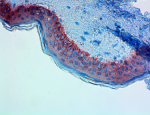
Anti-Keratin 5 antibody (clone Poly9059) showing strong cyto... 

-
Purified anti-Keratin 5 Polyclonal Chicken

IHC staining of anti-Keratin 5 antibody (Poly90590) on forma...
 Login / Register
Login / Register 




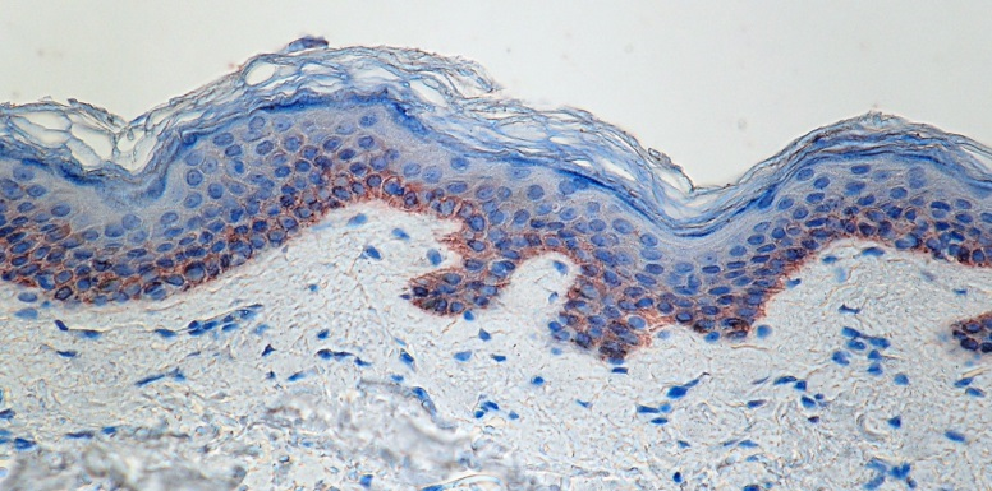
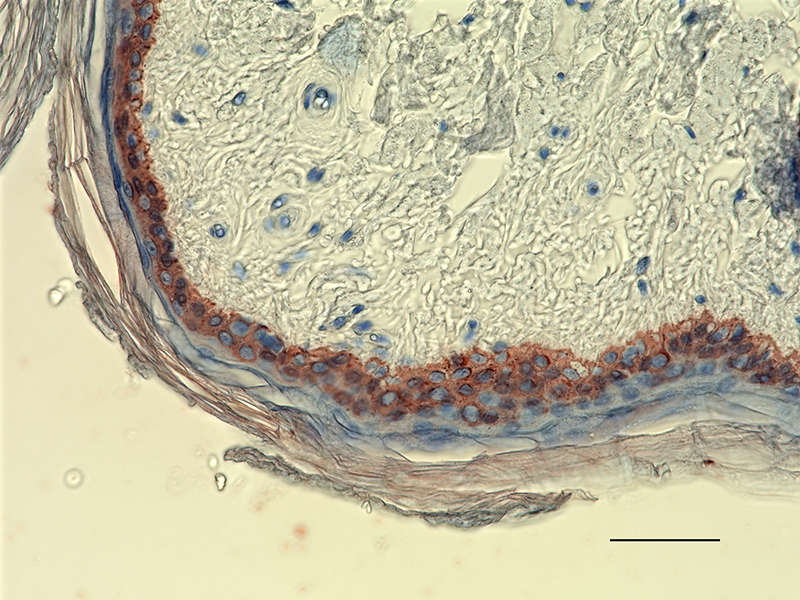

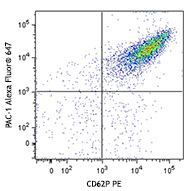



Follow Us